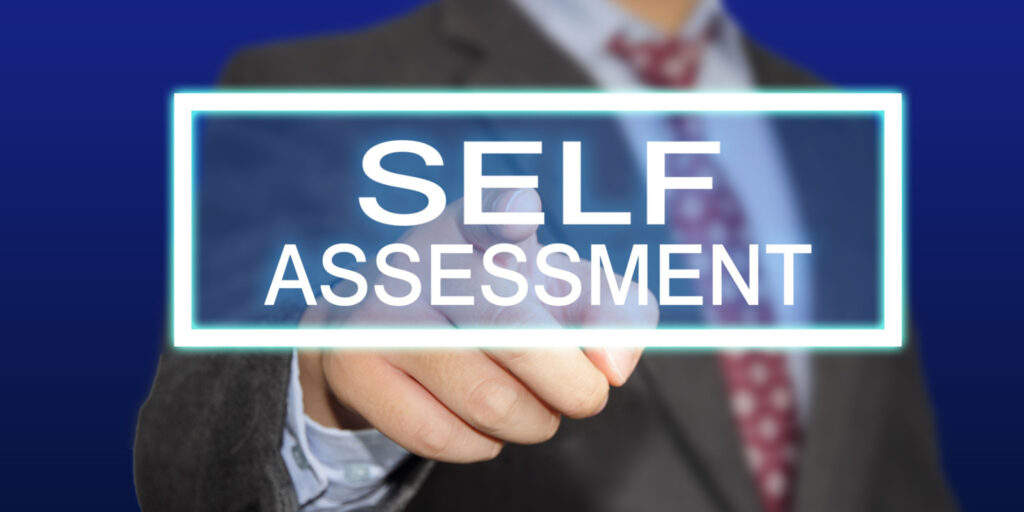Company directors and owners can remove money from a limited company in several ways. Typically, they pay themselves a salary, claim expenses, and receive dividends from their shareholdings. Salary earnings are paid and taxed through PAYE, but other sources of income are declared and taxed through Self Assessment. This means that, in most cases, you will need to register for Self Assessment if you run a limited company.
In this article, we discuss when it is (and isn’t) necessary for directors and company owners to register for Self Assessment. We explain how to register, how and when to complete a tax return, and how much tax you will pay through Self Assessment.
Self Assessment requirements for company directors and shareholders
Most people who set up and run their own company choose to pay themselves a director’s salary. This income is paid via their company’s payroll, which means that it is subject to Income Tax and National Insurance ‘at source’ through HMRC’s Pay As You Earn (PAYE) system.
The vast majority of company owners (shareholders) also claim expenses and pay themselves dividends. Some also receive taxable benefits or borrow money from their company in the form of a director’s loan. However, these types of earnings are not processed through payroll and PAYE, so the money the individual receives is untaxed at the time it is paid.
- A guide to PAYE registration for company owners
- How to Pay Myself from a Limited Company
- A guide to National Insurance contributions for limited companies
In these instances, the director-shareholder is personally responsible for declaring and paying tax on their additional income through Self Assessment. They must file a Self Assessment tax return after the end of each tax year and pay any additional tax they owe directly to HMRC.
Let’s take a closer look at when you do and do not need to register for Self Assessment as a company owner.
You do not need to register for Self Assessment if…
If your salary is the only income you receive from your company, you pay tax on these earnings through PAYE, and you do not receive untaxed income or benefits from any other source, you do not need to register for Self Assessment. The one exception is when your salary is more than £150,000 per year.
You must register for Self Assessment if…
If you receive any other form of taxable income or benefits from your company or elsewhere, whether in addition to or instead of a director’s salary, you will most likely need to register for Self Assessment.
The types of taxable income you may need to declare through Self Assessment include:
- annual dividend income of more than £10,000
- reimbursement of allowable expenses
- a director’s loan
- taxable benefits (such as a company car)
- income from savings and investments (e.g. savings interest, money from bare trusts, or interest in possession trusts)
- money from UK property or land
- pension income or charges
- Child Benefit payments (if you or your partner earn more than £60,000 a year)
- income from outside the UK (including pensions)
As we mentioned earlier, you will also need to register for Self Assessment if your total income for the year is more than £150,000 – even if all of this income is taken as a director’s salary through PAYE.
Additionally, if you are an off-payroll worker (sometimes called a contractor) and you have a Student Loan to pay, you will need to register.
If you are unsure, use HMRC’s online Self Assessment tool to check whether you need to register and file a Self Assessment tax return.
If your dividend income is less than £10,000
Every shareholder has a tax-free dividend allowance. Currently, this is £500 for the 2025/26 tax year. You don’t need to report your dividend income through Self Assessment if your annual dividend income is £500 or less.
If your dividend income is between £501 and £10,000, you can ask HMRC to change your tax code. You can then pay tax on your dividends through your wages rather than Self Assessment. This may be a good option if your dividend income is modest and you don’t have any other untaxed income to declare.
How to register for Self Assessment
If you need to register for Self Assessment, you should do this as soon as possible after setting up your limited company. The process is quite straightforward and it’s all done online.
The deadline for registering is 5 October after the end of the tax year in which you earned the untaxed additional income.
For example, if you need to report untaxed earnings for the 2025/26 tax year, which ends on 5 April 2026, you must register for Self Assessment by 5 October 2026.
Register online
To register for Self Assessment online, you will need a Government Gateway user ID and password. If you don’t have a user ID, click on ‘Create sign-in details’ on the Government Gateway sign-in page and follow the instructions.
Once you’ve signed in, you will be presented with a registration form to complete. You will need to provide the following information on the form:
- full name
- any previous name (and the date that it was changed)
- UK National Insurance number, if you have one
- date of birth
- current home address (this can be outside the UK)
- date you moved to that address
- daytime telephone number
- email address
- why you need to complete a tax return – tick all of the appropriate checkboxes that apply to you
- date(s) you received your untaxed income
When you have filled in the form, select ‘Next’ and review the summary of the details you provided. If you notice a mistake, you can go back and amend the form accordingly. Otherwise, click ‘Submit’ – and that’s it.
What happens next?
Within approximately 7 working days (or 21 if you are abroad), you will receive an activation code for your new account. This will arrive in the post. When you receive the code, you should sign in to your new personal tax account (via Government Gateway) to activate your Self Assessment service.
HMRC will also send you a letter with your personal Unique Taxpayer Reference (UTR). This will arrive in the post within approximately 15 working days (or 21 days if you are abroad). You can find your UTR sooner by logging in to your online tax account or via the HMRC app.
Your Unique Taxpayer Reference is important, so you must keep it safe. It stays with you for life, and you will need it whenever you deal with Self Assessment. Please note that your personal UTR is not the same as your company’s Unique Taxpayer Reference.
If you cannot register using the online service
You can also register by filling in form SA1 with the same information outlined above. You then need to print and post it to HMRC. The postal address is shown on the form.
Submitting a Self Assessment tax return
To declare your taxable income to HMRC and work out how much tax you owe on your additional earnings, you will need to submit a Self Assessment tax return after the end of each tax year. If you choose to file online, the deadline is 31 January. This means that you have almost 10 months to complete and file your return after the tax year ends.
HMRC will use the information you provide in your return to calculate your tax liability. You will then receive an official tax bill, which you will pay directly. The amount you owe will also be shown at the end of your tax return, so you will be able to see how much you owe as soon as you complete it.
File your tax return online
You can complete and file your tax return online through your tax account using form SA100 (the main tax return) and any supplementary pages required. To do so, you will need the following information:
- personal Unique Taxpayer Reference
- National Insurance number
- date of birth
- phone number
- details of your untaxed income (e.g. dividends)
- details of taxed earnings received through PAYE (i.e. your director’s salary)
- records of expenses and taxable benefits you have received
- details of any contributions you made to personal pensions or charity
- details of Student Loan or Postgraduate Loan repayments
You will begin by entering your personal details and answering a series of questions to determine which sections and supplementary pages you need to complete.
Next, you will fill in the relevant sections by entering details of certain types of income (dividends, interest, pensions), tax reliefs, and Student Loan repayments. Each section includes explanatory notes that you can read as you make your way through the form.
The rest of your tax return is made up of supplementary pages. If you pay yourself a director’s salary, you will need to complete supplementary page SA102 to report your pay, taxable benefits, and employment expenses.
Read HMRC’s guidance on how to fill in your tax return, to find out what information you need to enter in each section. The following video is also helpful for a basic understanding of the process: My first Self Assessment tax return.
Can I send a Self Assessment tax return by post instead?
Some people need to send their tax returns by post. Call HMRC to request a paper version of the SA100 tax return if you are unable to file your Self Assessment return online.
The deadline for sending a paper tax return is 31 October – almost 7 months after the tax year ends.
However, if you have the choice, it’s best to opt for online filing. It’s much easier, takes less time, and you will have an extra 3 months to send it to HMRC.
Give yourself plenty of time
We recommend that you register for Self Assessment and submit your tax return as early as possible. It’s easy to put these things off and then completely forget about them. Rushing your tax return can lead to mistakes and will cause unnecessary stress. You also don’t want to risk any late filing or late payment penalties.
Make sure you keep all of your paperwork and receipts, and gather all of the information you need before starting your tax return. If you file online, you don’t have to complete the entire tax return at once – you can save the details you enter and finish it later.
How much tax will I pay?
As a company director and shareholder, the tax you’ll pay through Self Assessment will depend on the untaxed income you need to declare. Some of your earnings and taxable benefits may be liable to Income Tax and National Insurance contributions. Dividend income will be subject to dividend tax, which has lower rates.
- Dividend tax – a complete guide
- Most tax-efficient director’s salary and dividends for 2024-25
- A guide to company director pension contributions
Whichever type of tax you need to pay, your bill will be based on your combined annual income from all sources. To work out your overall tax liability, the salary you earn from your company will be added to the other taxable income you declare on your Self Assessment tax return. This will determine which of the following tax bands you fall into:
- Basic rate (20%) Income Tax – applied to earnings up to £50,270
- Higher rate (40%) Income Tax – applied to earnings between £50,271 and £125,140
- Additional rate (45%) Income Tax – applied to earning over £125,140
Earnings up to £12,570 are within the tax-free Personal Allowance for the year. This is the amount of money (from any source) that most people can earn before they need to pay tax. However, the Personal Allowance reduces by £1 for every £2 of adjusted net income above £100,000, meaning it will be zero if your income is £125,140 or more.
If you take dividend income, these earnings (above your £500 dividend allowance) will be subject to dividend tax based on your Income Tax band. The current dividend tax rates are:
- 8.75% – on dividend income within the basic rate tax band
- 33.75% – on dividend income within the higher rate tax band
- 39.35% – on dividend income within the additional rate tax band
The reason for these lower rates is to account for the fact that dividends are paid from company profits, from which Corporation Tax has already been paid.
If you pay Scottish Income Tax, the above dividend rates and thresholds will also apply to your dividend income.
When do I need to pay my tax bill?
If you owe any additional tax through Self Assessment, you will need to pay your tax bill by 31 January after the end of the tax year. This is the same date by which you must send your online tax return.
You can wait until the deadline to pay the tax that you owe, or you can set up a Budget Payment Plan to make weekly or monthly payments toward your bill.
What are the Self Assessment deadlines?
There are several Self Assessment deadlines you need to remember. HMRC will also send you notices when it is time to file your tax return and pay your tax bill.
Your tax return covers income earned in the previous tax year (April to April), not the previous calendar year (Jan to Dec).
For example, for the current 2025/26 tax year (6 April 2025 to 5 April 2026), the deadlines are:
- Register for Self Assessment if you’ve never submitted a return before – 5 October 2026
- Filing deadline if you are sending a paper tax return – 31 October 2026
- Filing deadline for sending an online tax return – 31 January 2027
- Paying your tax bill – 31 January 2027
If you fail to meet one or more of these deadlines, HMRC may apply penalties and also charge interest on late payments of tax. Make a note of these dates to avoid any surprises.
Get help with Self Assessment
There are lots of places where you can get help with Self Assessment. You can:
- contact HM Revenue and Customs (HMRC) for general Self Assessment enquiries
- watch HMRC’s videos and join webinars
- ask HMRC’s digital assistant
- get technical help with your online account
- read HMRC’s Self Assessment helpsheets
- read introductory tax guidance on different types of income
We would also recommend appointing an accountant or tax agent. Seeking professional help and tax advice will ensure that you pay yourself in the most tax-efficient way, claim all of the allowances and reliefs that you’re entitled to, and file accurate tax returns on time.
Thanks for reading
Whilst some company owners have no need to register for Self Assessment, the vast majority do. This is because, typically, it is far more tax-efficient to pay yourself a modest salary and top up your earnings with dividend payments. Moreover, most company owners also claim expenses.
If you need to register, be sure to do so in plenty of time before the deadline. Completing the registration form is easy, but it takes a few weeks to receive everything you need from HMRC.
When it is time to send your Self Assessment tax return, gather all of the information you need, read HMRC’s guidance so you know what to expect, and try to start your tax return as soon as you can after the end of the tax year.
We’re here to help, so please leave a comment below if you have any questions about this post. Explore the 1st Formations Blog for more limited company guidance and small business insights.
Please note that the information provided in this article is for general informational purposes only and does not constitute legal, tax, or professional advice. While our aim is that the content is accurate and up to date, it should not be relied upon as a substitute for tailored advice from qualified professionals. We strongly recommend that you seek independent legal and tax advice specific to your circumstances before acting on any information contained in this article. We accept no responsibility or liability for any loss or damage that may result from your reliance on the information provided in this article. Use of the information contained in this article is entirely at your own risk.
















Join The Discussion
Comments (4)
(posting again as I accidentally had VPN turned on and got blocked)
How does HMRC determine how you’ve taken salary, dividends or benefits?
As a solo business owner of an Ltd company, any revenue comes into my business bank account (under the business name, but I am named as owner). Say I leave all income in that account (to invest back into the business), how does HMRC understand that and not just think this is my personal income?
Secondary question; all your articles say that salary need to be set up as PAYE, dividends are distributed through the business “Payroll, and there are various NIC and “employer” obligations. But if the business is “just me”, do I need to officially set these up, and how? Or is it just a case of transferring some money from the business account to my personal account and stating in my self assessment “OK, this is my salary and these are my dividends”?
Does 1st Formations have any articles on setting these up, or even offer (or recommend) such services?
BTW, I am a non-UK resident, so that may affect things.
Thank you for your kind comment.
Unfortunately as we are not regulated to provide accountancy advice, we are unable to provide advice on specific scenarios. We would recommend contacting an accountant for further assistance.
Please accept our apologies for any inconvenience caused.
Kind regards,
The 1st Formations Team
is this applicable for non-residents?
or do we only pay 19-25% corporate tax?
i was told that non residents pay themselves dividends, and then, in my country, i need to pay tax on these dividends.
Hi Ines,
Companies are required to pay corporation tax on their profits, even if the company is owned by non-residents. There may be additional things you need to pay as well, for example tax on the dividends you take up from the company. Exactly what a non-resident will pay in tax will depend on their specific circumstances, but the biggest factor that will determine this is where they are tax resident.
We hope this his helpful for you.
Thanks,
The 1st Formations Team